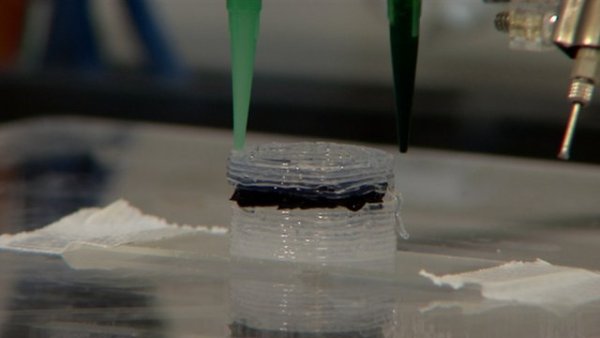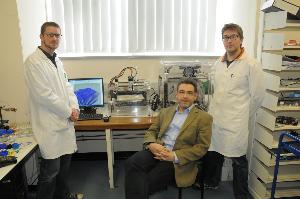3D Printers Can Print Drugs

Researchers at the University of Glasgow have been experimenting with 3D printing technology, forming what could well be a revolution in pharmaceuticals for scientists, doctors and the world.
 Gardiner Chair of Chemistry at the University, Professor Lee Cronin's paper (‘Integrated 3D-printed reactionware for chemical synthesis and analysis’) is to be published in the Nature Chemistry journal, and it will cover this process of drug creation that has been proven effective.
Gardiner Chair of Chemistry at the University, Professor Lee Cronin's paper (‘Integrated 3D-printed reactionware for chemical synthesis and analysis’) is to be published in the Nature Chemistry journal, and it will cover this process of drug creation that has been proven effective.
This was made possible with a widely-available 3D printer (costing £1,250) and the open source design software required to operate it. The team have invented a special polymer gel, termed 'reactionware,' that sets at room temperature and induces the chemical reactions via an intricate construction of layers and vessels.
It's then combined with other chemicals, and deposited by the printer to form the particular drug you request. This blurs the line between the reactor (the casing around a tablet) and reaction (the chemicals that go inside it) in medication. The breakthrough being that the 3D printing technology and computer design software grants a vast amount of control over the finite construction of the drug beyond anything we've seen before.
With this, the capability of custom building vessels is now open to a laboratory scale operation: miniscule compared to the large pharmaceutical companies which have had exclusive access to said technology up until now.
The opportunities and possible usages of this technology span across the whole globe, and just as the cost barrier to recording music or photography was taken down by the consumer, the technology required to do this is on the fall as the standard is becoming increasingly popular. Something, as Professor Cronin explains, is a God send for the smaller guys in the medical industry:
It’s entirely possible that, in the future, we could see chemical engineering technology which is prohibitively expensive today filter down to laboratories and small commercial enterprises.
How many crises and situations across the globe that could be helped dramatically by this: the drug supply issues, the third world, etc. And the other potential evolutionary steps are extremely apparent: not only customising a drug's dosage, but also controlling its reaction to ensure its the best possible for that patient.
It's even being said that this will bring the 'Pharmacy to your living room:' allow for the user to take advantage of a device which may make its way into the average household as an appliance soon, and create their medication. This, as Cronin fortunately identifies, will require some rather extreme curation, moderation, and professional help.
Perhaps with the introduction of carefully-controlled software ‘apps’, similar to the ones available from Apple, we could see consumers have access to a personal drug designer they could use at home to create the medication they need.
This will revolutionise access to healthcare for the world, just have to make sure we use it right.
Press Release Source: University of Glasgow
Jason England

